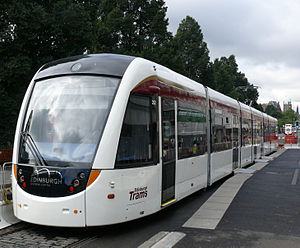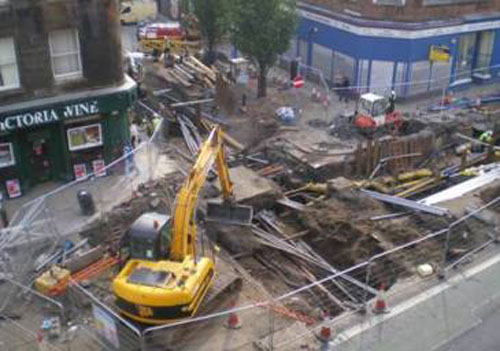Following stunning news today from the GWRC study into the cost of a possible Light Rail system in Wellington – results have come back that the cost COULD be as LOW as $14m per km.

By anybody’s books, that is fantastic news – and means that costs are indeed well within reach of a Council the size of Wellington’s.
If we look at the published figures available, of the capital cost of light rail per kilometre around the world (all in NZ dollars), we can see that costs in places where they know what they are doing (ie the Netherlands), costs could be even lower – at $11.6m / km. Here’s the published list:
$11.5m Edmonton, Canada
$11.6m Eidenhoven, Netherlands
$14m Lowest likely Wellington cost
$16.7m Bremen, Germany
$19m St Kilda
$25m San Diego, USA
$28.6m San Francisco, USA
$29.4m Karlsruhe, Germany
$31m Gold Coast, Australia
$44.8m Minneapolis, USA
$45m World Bank Estimate
$46.4m Bergen, Norway
$50m Rouen, France
$56.9m Dublin, Ireland
$141m Dominion Post’s selected sensational possible total
$275m Seattle, USA (included a bus tunnel)
At the Arch Centre, we’re puzzled that the Dominion Post chooses only to highlight the worst possible case. As can be clearly seen from the graph above, for most cities surveyed, the cost is consistently in the range of $20-$30m / km. The World Bank reports an estimated cost of $45m / km. The upper limit cost of $141m / km is therefore slightly ridiculous. Clearly the inclusion of the Bus tunnel in an urban setting such as Seattle, has pushed that particular cost out. Tunnels are expensive compared to building ‘at grade’, and even an aerial railway is more expensive than at grade – although not as expensive as a tunnel.
Update: The graph below, from the extensive AECOM Public Transport Spine Study for GWRC, shows clearly that $141m / km is totally over the top. MRT, or Mass Rapid Transport (think, London Underground), can take the most people, and costs the most as well. Wellington’s never going to be in the market for that. Instead, we will be looking at whether LRT (Light Rail Transport) or BRT (Bus Rapid Transport) is the route to go down.

But so far, no one is talking about building the Light Rail either above ground, or below ground. Luckily, as Wellington has had trams running for many years before, we know that the entire length of railway needed, from the Railway Station all the way out to the airport, can be built at grade. Yes, there are some awkward pinch-points for traffic to squeeze through, and so there could possibly be small lengths of tunnel at about 3-4 places over the whole route, but overall, the track could run satisfactorily at ground level.
So why is the Dom Post consistently reporting matters in a sensational manner? Just a case of trying to sell more newspapers? The Dom Post consistently misreported the possible cost of the Basin Reserve Option X put forward by the Arch Centre – only reporting the worst possible case, including the top estimate and maximum contingency, against the NZTA’s lowest possible estimate and forgoing all contingency. That was just shonky reporting then – and it is shonky reporting again now.

If the Dom Post would try a little harder with its reporting, they would see that there are reasons why some schemes have costs blowouts. Mainly, it is to do with the diversion of services. Some of the commenters on the Stuff website have noted the cost blowouts in Edinburgh with their new tram line – which, if investigated properly, would show that extensive rerouting of drainage, gas pipes, water, sewerage, electrical, telecommunications, etc, and indeed the rerouting of traffic itself, have all had an expensive effect on the finished cost of the Edinburgh tram route. As well as that, it is going straight down the carefully cobble-stoned precious length of Princess St – the Scottish capital’s “golden mile” of expensive shopping.
That gives us in Wellington something else to think about. Obviously, 50 years ago when the tram lines were pulled up, there were no services under the tracks. Over the last 50 years however, lots of services have been installed. Possibly the only place the services haven’t been installed, is down the seaward side of Jervois / Customhouse Quay. We could, therefore, take out a lane or two of traffic, and have a guaranteed services free run for at least the first couple of km. What about it Wellington?



Leave a Reply